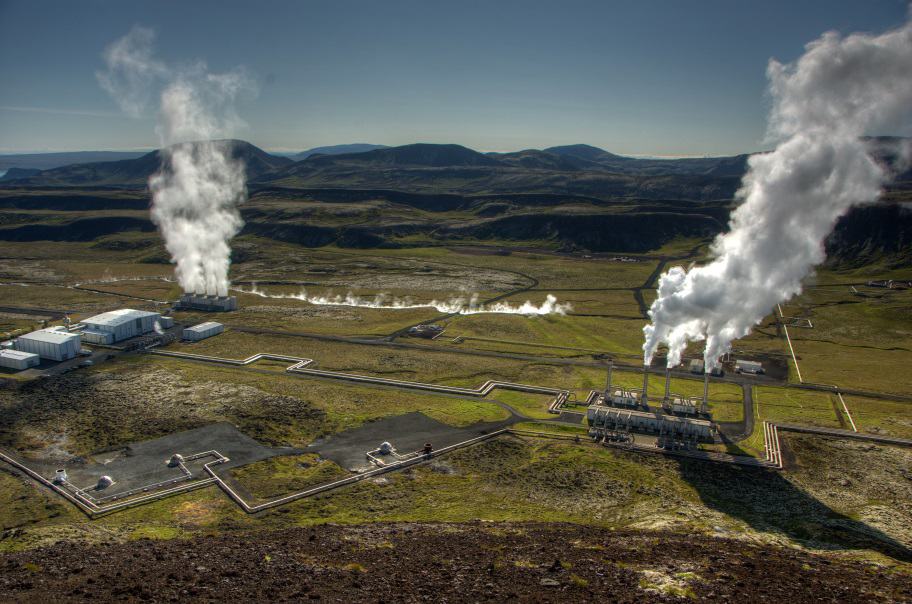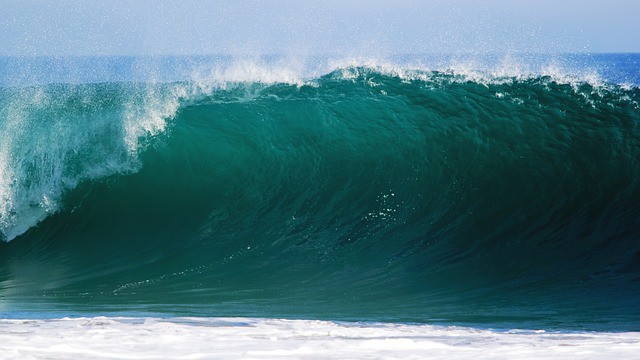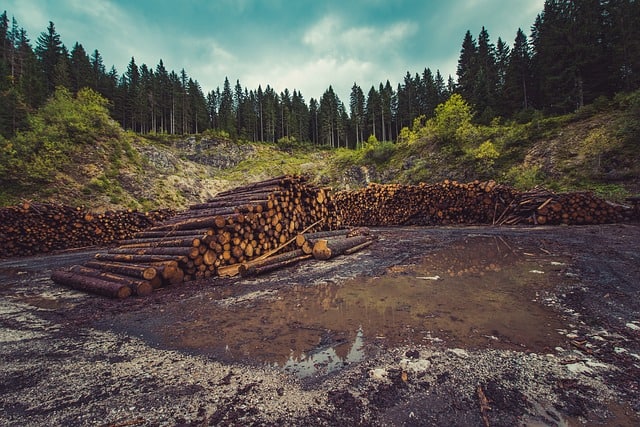Geothermal energy is the heat energy that we can find within the core of the planet. We can use this heat energy to generate electrical energy. We call this geothermal energy and now, we will be looking at the advantages and disadvantages of geothermal energy.
The term geothermal is literally translated to as the heat from the earth. Generally, there are a lot of chemical reactions happening in the core of the earth. These reactions may result in the formation of what we call hot springs.
If hot springs are unable to make their way to the surface of the earth, this is what we refer to as a geothermal reservoir. It is possible to harvest this resource and use it to cool or heat our homes on a variety of scales. This resource is even used to generate electrical energy.
Basically, geothermal energy is just utilizing the temperature of the earth. There is a constant transference of heat from the core of the earth to the planet’s surface. The difference in temperature is referred to as the geothermal gradient.
Furthermore, the radioactive decay of elements in the core generates the heat in the Earth. This results in constant heat flow for a very long period.
Geothermal Energy: Basics
Now, let us dig deep into our planet. Firstly, the temperature at the core of the earth is very high. And it is capable of producing an enormous amount of energy. This heat energy can easily be converted to vast amounts of untold electrical energy.
Interestingly, a few scientific studies found, this is a renewable energy resource that will always produce energy as long as the earth spins on its axis.

Image: https://commons.wikimedia.org/wiki/File:Geothermal_energy_methods.png
Base Load and Dispatchable Power Source
Next, we need to understand the two main types of power plants existing in different countries right now. These are what we call the base load plants and peak load power plants. For geothermal energy, a base load plant is a perfect use based on its characteristics.
So, what is a base load plant?
Basically, a power plant that produces constant energy is a baseload plant. Many of the power plants on Earth including nuclear, wind, and coal power plants are base load power plants.
Compared to other renewable energy sources, a geothermal power plant will produce the same or a larger amount of energy. Though the plant can be small, it can produce more power than a large solar or wind power plant. And this makes geothermal energy better than any other renewable sources.
Geothermal Power Plant
So, let us look at the basics of how geothermal plants work. Like any other plants, there are several ways to construct a geothermal power plant. Its design can be for load-centered, or it may be flexible. Generally, its primary goal is to provide the required energy to the grid.
In fact, most geothermal plants have flexible dispatching capabilities. This is an attribute that exists in natural gas power plants. Though power supply fluctuation may occur from solar or wind power intermittency, the geothermal power plants can still meet the power that the company needs.
How Do Conventional Geothermal Power Plants Operate?
Firstly, workers drill their way underground after careful analysis of an area. This is to bring energy to the earth’s surface. Then, that energy will be the source for converting geothermal energy into electrical energy.

Image: https://commons.wikimedia.org/wiki/File:Geothermal-energy.png
Secondly, a geothermal flash power plant separates steam from water. Then, it uses the steam collected to power a turbine.
Finally, the turbine turns and runs the generator, which then provides the electric energy for distribution. The separation of the steam from the water is done in a steam separator and the liquid is then pumped back into the main reservoir.
At the status quo, geothermal flash power plants make up one-third of the power plants in the US with most constructed in California. Hence, this makes it a very reliable source when you can find the right conditions for it.
Advantages and Disadvantages of Geothermal Energy
Currently, a geothermal pumping system can be used with the heat from the surface of the earth to produce energy. With the aid of a heat exchanger and a piping system, the air can be pumped into buildings.
Besides, we can also use the system for reverse pumping, which is pumping the hot air out of buildings. There are a number of advantages to building a geothermal energy plant but there also a lot of disadvantages associated with this development as well.
First of all, let us look at the advantages of Geothermal Energy.
Advantages of Geothermal Energy
-
Environmental-friendly
Geothermal energy plants are not like fossil fuel plants. They emit little to no greenhouse gas. This type of power plant does not involve combustion.
This type of energy does not even cause a lot of pollution. Though there are still some aspects of pollution, it is only minimal and there is a maintenance of the plant regularly. A geothermal power plant emits one-eighth of the amount of carbon dioxide that a coal power plant.
The most common geothermal power plants are binary. Along with flash binary plants and even dry steam plants, they don’t produce as much pollution as a fossil fuel plant.
-
Renewable power source
Geothermal resources naturally replenish. This makes them excellent renewable resources. With a vast availability, there is no chance to deplete this resource completely.
I could say that it is common knowledge that fossil fuels resources have a finite lifespan. Opposing that case, the lifespans of geothermal resources will last as long as the planet. So, regardless of any conditions, energy production is possible through geothermal production.
This is a constant and reliable source of natural energy. It is a possibility that geothermal energy will replace the energy produced by fossil fuels.
This type of energy production can be the bridge to help seal the gap produced by solar and wind energy production. The production of electrical energy by means of geothermal can increase and decrease easily when there is a need or demand.
-
Stable Resource
Wind and solar power plants are prone to fluctuations in energy output. This is not the same as geothermal energy production. These plants are able to provide a stable supply of energy and are very capable of producing the necessary energy requirement and demands.
-
No sound pollution
In traditional cooling and heating systems, they produce large amounts of noise during operations. Geothermal systems operate similar to refrigerators and they operate very quietly.
-
Widely available
Geothermal heat is vastly available all over the world. There is only one problem and that is accessing the reservoir. There has been an increase in the technology of the devices available to access the reservoir.
Furthermore, it has made things easier for individuals to harvest this natural resource for their own personal use. The technology need by individuals to convert this heat energy into electrical energy is still to come and will be available soon.
-
Great for heating and cooling
This benefits even small households. There has been a significant increase in the number of households that incorporates this method of cooling and heating their home.
-
Less expensive than alternatives
It will cost a significant amount to initially install a geothermal system. This is mostly due to the construction of the needed buried loop system. This initial price often causes the homeowners to choose the conventional heating and cooling system. Even without realizing the amount they can save in the coming years concerning electric bills. The installation of this system will see more than a fifty percent reduction in your electric bill.
-
Creates new jobs
There will be new jobs available in some rural areas with the implementation of a geothermal project. With a project like this in certain areas, many unemployed individuals will have a steady income for as long as about four to five years.
-
Easily harness
The process of harnessing this natural resource requires the use of no fuel. This makes it significantly cheaper to use and ensure a less chance of fluctuation in energy prices.
-
Abundant Supply
This is a natural renewable source of energy. There will never be a shortage of this resource or other such problems that might arise with the production of power from other resources like fossil fuels.
Now, let us weigh things up and see for ourselves the reasons why people oppose this idea. The advantages seem to be perfect but we need to look at the disadvantages, also.
Disadvantages of Geothermal Energy
-
Surface Instability
There have been events of induced earthquakes as a direct result of the harvesting of geothermal energy. The earthquake was a result of hydraulic fracturing. This is an important factor in the development of enhanced geothermal power plants. It is a known fact that this process will affect the solidity of the land. This has been the case in Germany and New Zealand.
-
Environmental Issues
A Geothermal power plant releases high levels of greenhouse gases that are below the surface of the earth. The processes of the plants directly cause these gases to migrate to the surface of the earth and into the atmosphere. This is in no way comparable to the pollution caused by using fossil fuels.
Geothermal power plants use chemicals that can contaminate water sources if there is a leak. There is always the possibility of a leakage regardless of the safety precautions in constructing the plant. Even so, this can result in the contamination of a water table.
-
Expensive
Large-scale geothermal projects are costly. Even the entire processing of analyzing an area and then drilling to create the reservoir is very expensive. You have to remember that this type of investment will save you significantly in the years to come.
-
Location-specific
Reliable geothermal reservoirs are only found in certain countries. If you don’t reside in certain parts of the world, you won’t be able to make proper use of this renewable resource.
-
Sustainability Concerns
Although geothermal reservoir is a renewable energy resource, some scientists believe that they can deplete if plants use them faster than it can produce. It has taken centuries for most of these reservoirs to accumulate their amount of heat and liquid.
In order to remain sustainable, these geothermal reservoirs require excellent management and maintenance. It is different as it relates to residential geothermal systems.
-
Geographical Limitations
This type of energy resource is greatly dependent on geographical location. Geothermal power plants are most effective when they are near in areas with tectonic fault lines. Areas like this are difficult to find. It may not be everywhere on the planet, but the countries that are fortunate enough to have them can benefit significantly from their construction.
-
Distribution Costs
To transport geothermal energy over a considerable distance can become costly. In some instances, it is just impractical. And the surrounding areas need to be near the reservoir. Hence, it would be difficult for optimizing the construction of the geothermal plant.
-
Cost of Powering the Pump
The heat pumps of a geothermal power plant need to power up and with this process, there will be additional costs.
-
It Can Run Out of Steam
Careful management is crucial to a geothermal reservoir. Plants should utilize adequately the energy that they can produce. If the heat of these reservoirs is abused, it is possible that there might be a meltdown. This might not be the only problem that might arise from not managing the resource correctly.
-
Sites Can Experience Dry Spells
The heat provided by geothermal reservoirs can die. There can be a decade span of no activity in the reservoirs after years in operation. This is why there is a need for special care to avoid any abuse in the well.
-
Very high temperature needed
The drilling process involved in constructing a geothermal system is not an easy feat. In short, drilling into a rock with high temperature is quite complicated. There is a need for a high temperature when starting the geothermal process. If the temperature is too low the geothermal energy will not generate.
-
Infrastructure
There will be a need for a few advance infrastructures if there is to be the construction of a geothermal energy plant. These cutting-edge pieces of equipment will cost a lot and will reflect in the initial cost of building a plant of this type.
Conclusion
Summarizing it all, the disadvantages to geothermal energy production. Consequently, many will argue against geothermal energy when it comes to reasons for investing in it.
Strictly speaking, there are a lot more advantages to investing in a geothermal power plant than disadvantages. It might be costly at first but investing in a plant like this will surely save you a lot of money in the coming years.
For most people, they shy away from this investment because of its ability to go dormant for years. But with proper management of the reservoir, that will be a situation you will never have to deal with.
The benefits of investing in a geothermal power plant significantly outweigh the drawbacks of these systems. They provide clean energy with little to no negative repercussions on the planet, the wildlife, human life or the vegetation. This is the cleanest form of energy production that we have discovered so far.





Thank you for talking about how the temperature at the core of the earth is very high and can produce a lot of energy. My husband and I are thinking of starting a business where we would need geothermal drilling. We will look for a great geothermal drilling company in the area.